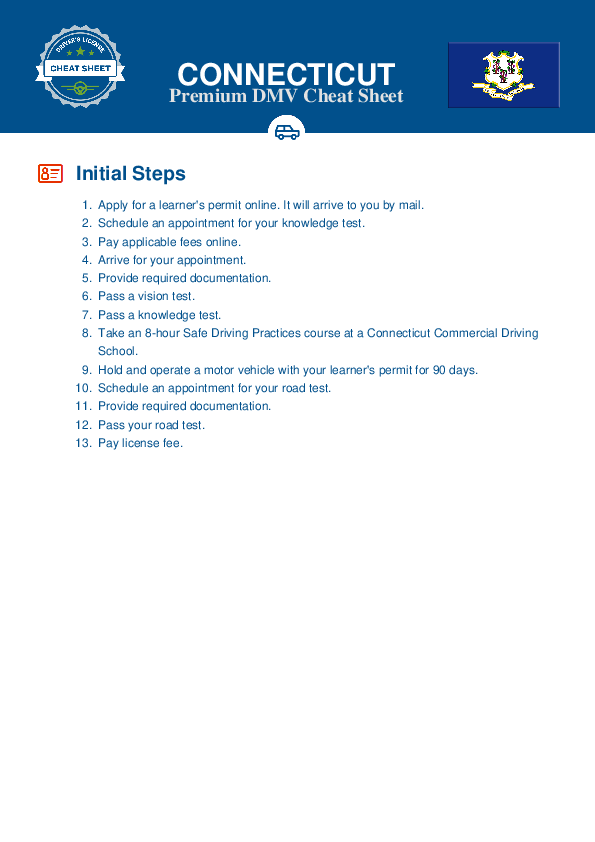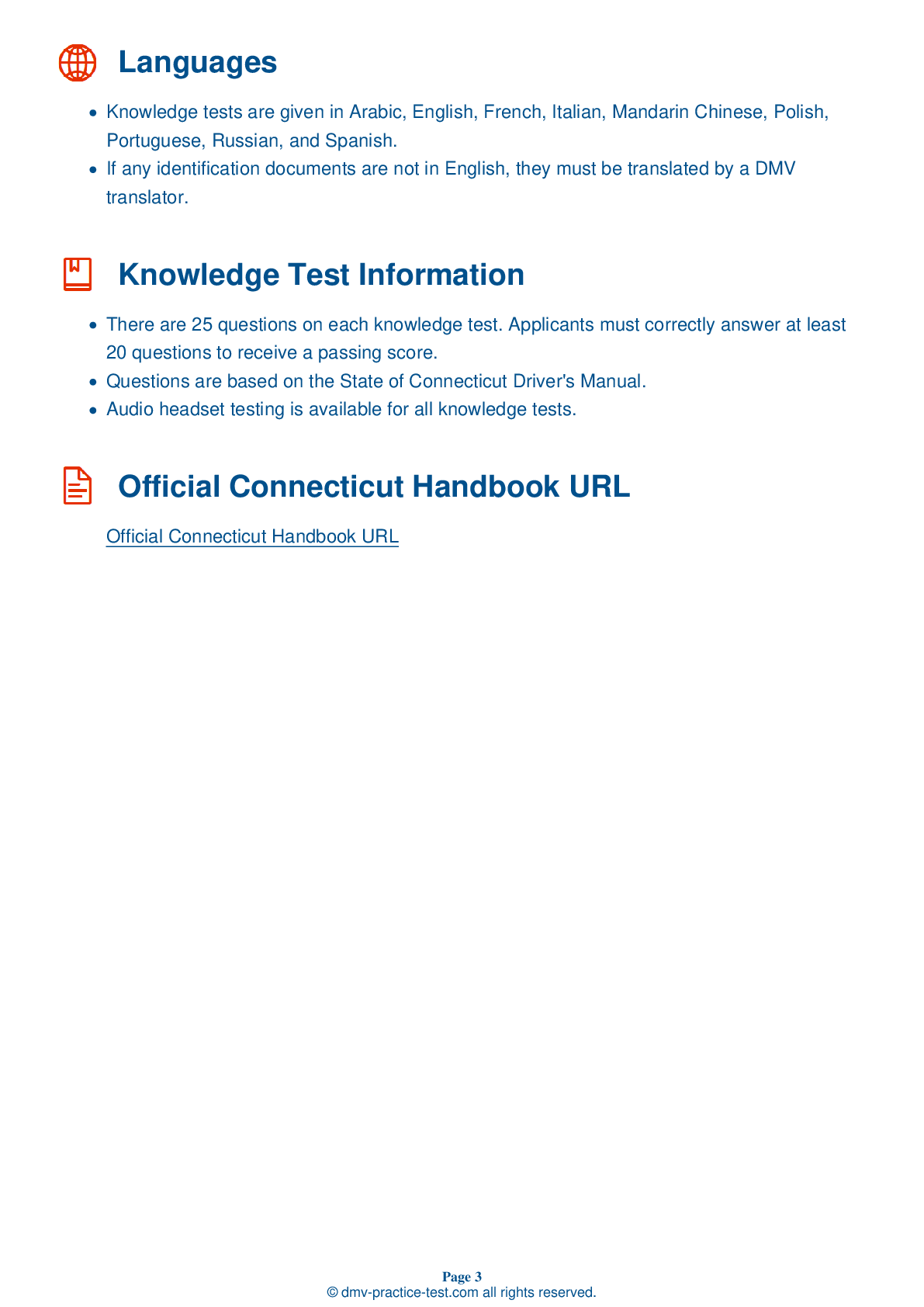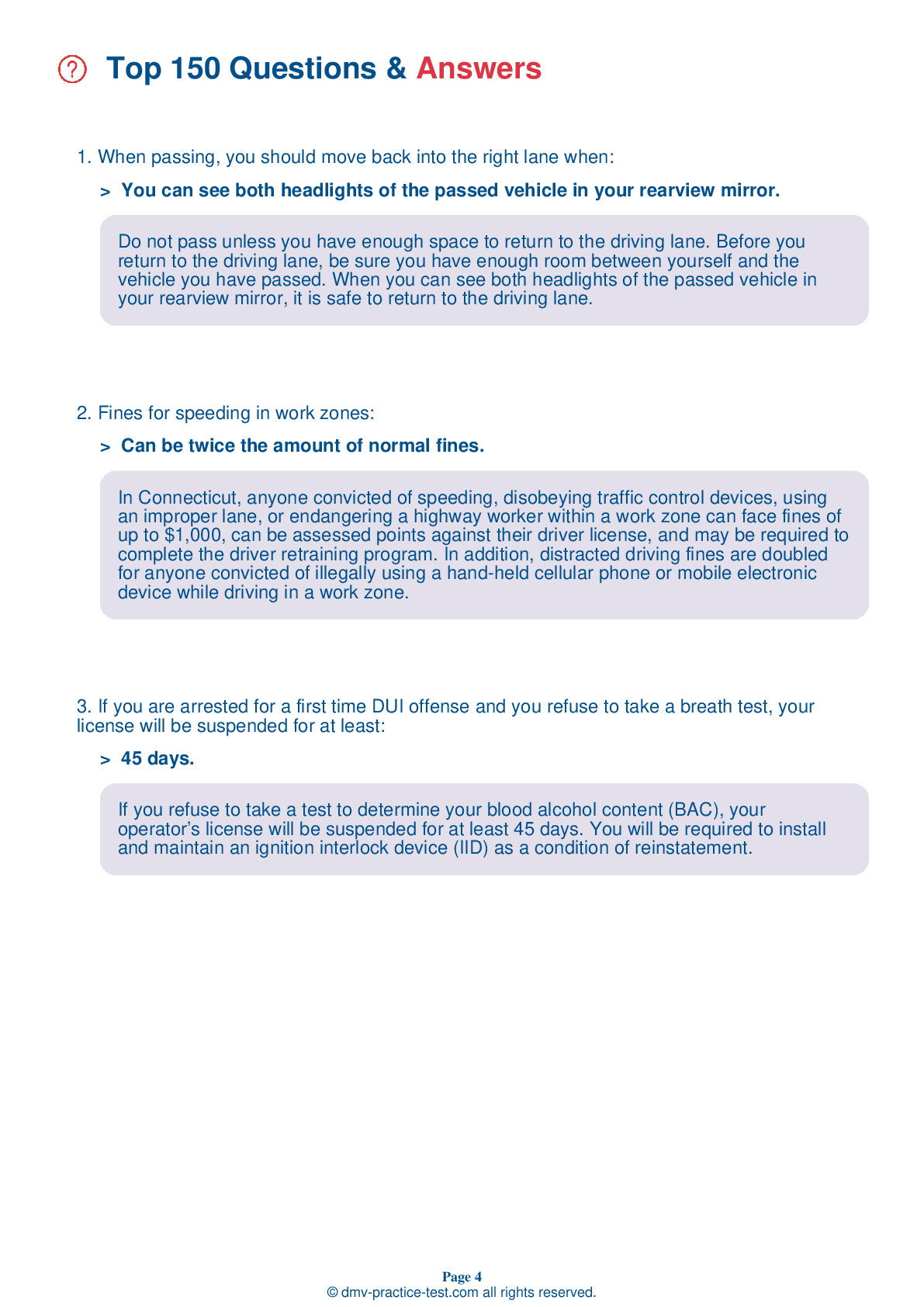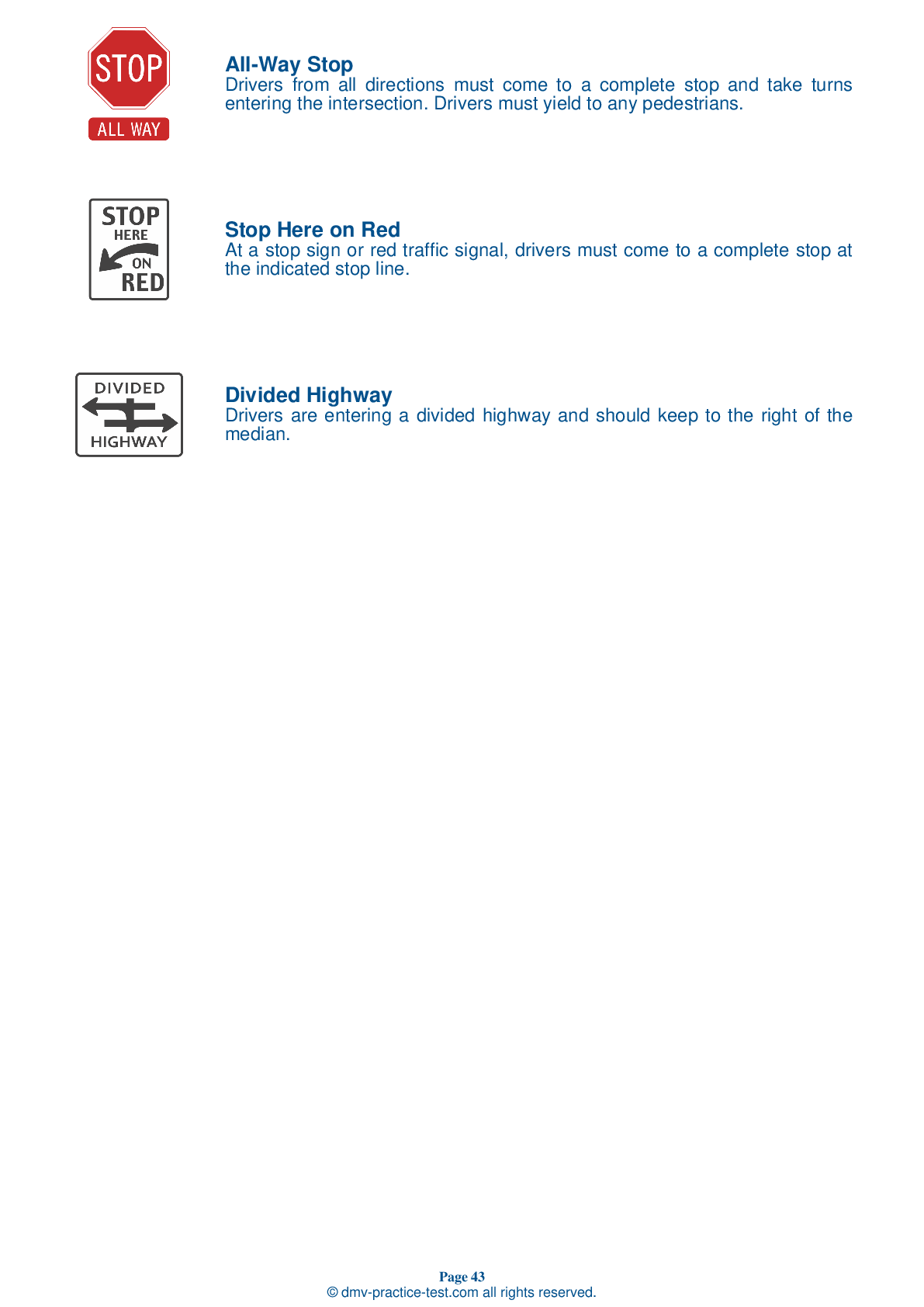FREE Connecticut DMV Practice Test #22 Page 3 of 3
This set of Connecticut DMV practise tests was just updated for January 2025. It includes questions based on the Connecticut Driver Handbook's most essential traffic signs and regulations for 2025. Use actual questions that are very similar (often identical!) to the DMV driving permit test and driver's licence exam to study for the DMV driving permit test and driver's licence exam.
Each practise test question has a hint and explanation to assist you in remembering the concepts. The written component of the official DMV test will include questions about road rules, traffic signs, and driving statutes, as well as information from the Driver Handbook.
To achieve the required passing grade, you must correctly answer 20 of the 25 questions. Take our DMV practise exam to help you prepare for your Connecticut instruction permit or driver's licence.
The DMV exam is available in several languages.
Using any form of testing help will result in an automatic fail, and the DMV may take further action against your driver's licence, so avoid it.
17 . You are approaching a green traffic light and traffic is blocking the intersection. What is the best thing to do?
Even if your light is green, you must not enter an intersection unless you can get completely through the intersection before the light turns red. If you block the intersection, you can be cited.
18 . To improve visibility lowered by rain or fog, drivers should use their:
Low beam headlights should be used when driving in rainy or foggy weather. Even if they do little to help you see, low beams will make it easier for others to see you.
19 . What should a driver do when approaching a traffic control signal that is not in operation?
When traffic control signals are not working, a driver must always treat the intersection as an all-way stop and come to a complete stop, unless otherwise directed by law enforcement. The driver must then look and yield the right-of-way before entering the intersection.
20 . Streets and highways are most slippery:
Driving during the first half hour of rainfall is dangerous because roadways become extremely slippery when the water mixes with oil and other chemicals on the road surfaces that have not yet washed away. Use extra caution when driving on slippery roads.
21 . You are entering a freeway. Check traffic on the freeway by:
When entering any roadway, you must be aware of traffic conditions. Use your side mirror and look over your shoulder to help you see and anticipate traffic when entering a freeway.
22 . If you plan to pass another vehicle, you should:
Even when you signal, you should not assume that the space you want to occupy is free or that other drivers will give you the right-of-way.
23 . Which lane must you be in before making a left turn from a one-way street?
When making any turn, turn from the lane closest to the direction you wish to travel into the first available legal lane. If you are making a left turn from a one-way street, this means that you would make the turn from the lane nearest to the left curb.
24 . You may pass a vehicle when:
A single broken line indicates that drivers may cross from either lane to change lanes. Dashed yellow lines alongside solid yellow lines indicate that passing is permitted from the lane next to the broken line, but not from the lane next to the solid line. Only change lanes when it is safe to do so.
25 . If you encounter an aggressive driver, you should:
Drivers must respect and cooperate with all other road users and conform to specific rules in order to maintain order and to avoid crashes. When encountering an aggressive driver, it is safest to just get out of their way. Always avoid competing with other drivers.
Need Car Insurance? No problem!
Compare the best rates in Connecticut and find a personalized policy that meets your needs.
1. Are You Currently insured ?
2. Married ?
3. Do you own your Home?
4. Do you have more than 1 car ?
5. Have you or a Family Member Honorably Served in U.S. Military ?
6. Your Name
7. Age
8. Zip code
IMPORTANT REMINDER:Auto Insurance is Mandatory to drive in Connecticut. Get covered before you hit the road to avoid any fines.
Ranked by best match



